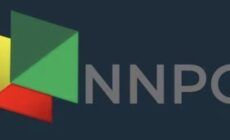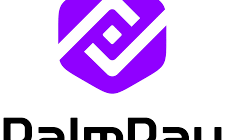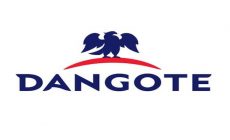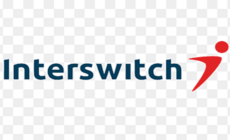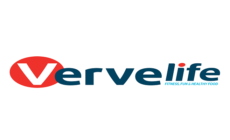The disruption precipitated by the coronavirus pandemic has driven the world virtual. Digital meetings and webinars (seminars on the web) are now the new normal.
While there are now webinars for all sorts of issues, the Protein Challenge Webinar, set up to draw attention to the issues around protein deficiency in Nigeria, is unique. The latest session had the theme: The UN Decade of Action on Nutrition: Connecting The Dots for Nigeria, and held on Friday, August 21, 2020. It brought together experts across the Sustainable Development Goals (SDGs), nutrition and NGO spaces, to speak to a diverse audience of stakeholders.
The webinar zeroed in on how government and other relevant stakeholders can chart a path towards helping Nigeria achieve the SDG 2 in pursuance of the United Nations Decade of Action on Nutrition.
In case you missed the session, here are the key 10-top takeaways:
#1: There are 17 SDG global goals.
The Sustainable Development Goals (SDGs) are a collection of 17 global goals designed to be a “blueprint to achieve a better and more sustainable future for all”. Set in 2015 by the United Nations General Assembly, the SDGs are intended to be achieved by the year 2030. The Nigerian government is localizing the SDGs with a vision to ensure that ‘No Nigerian is left behind’. The government is integrating the SDGs in an inclusive and people-centred manner while focusing on institutional and policy strengthening. The Nigeria road map to the SDGs is designed to focus on six thematic areas namely: policies, data management, institutions, partnership, communications and finance with a three-phase implementation programme set to be achieved by 2030.
#2: Paperwork is never enough.
The government needs to translate policies into action, create awareness as well as establish the financial and legal framework to achieve the SDGs, with particular emphasis on SDG 2. SDG 2 seeks to end hunger, achieve food security and improved nutrition and promote sustainable agriculture. The government needs to have a coherent and consistent plan to educate the masses on the SDGs. To ensure that no Nigerian is left behind, no Nigerian should be ignorant of the SDGs. The urgent need, therefore, is for widespread awareness about nutrition and associated issues.
#3: The SDGs are about goals and set targets.
It is impossible to set targets without data – verifiable and measurable data. In Nigeria, there is a glaring paucity of data and, where it exists, many times it is grossly unreliable. To make progress data is required. Data is very important for planning, assessment and reporting. When it comes to nutrition, UNICEF and the Nigerian Bureau of Statistics (NBS) and others, are doing a lot in this space. The Nigeria Protein Deficiency Report is a recent contribution to the body of data available. The report sheds light on the food consumption patterns among Nigerians.
#4: To make headway as a nation, Nigeria must ensure that the citizens are healthy.
There must be a conscientious effort to increase the healthcare budget, with emphasis on the nutrition budget line, early approval and prompt release. The country needs to pay attention to the health and nutrition sector. But it starts here: the government allocating more funding to the value chains in the agriculture, health and nutrition spaces.
#5: Security is key to tackling malnutrition.
The Government must improve access to farmlands via enhanced security nationwide. Insecurity should be resolved so as to provide ensure that farmers can safely go about their business. In addition, farmers should be properly trained in farming and finance management. People also need to be properly educated about sustainable agricultural practices. Nigerians everywhere must begin to explore and adopt home gardens and invest in sustainable agriculture practices so as to boost healthy eating and better nutrition.
#6: Government alone cannot do this.
It urgently needs to partner with non-state actors, both NGOs and private sector players. It is only through the involvement of all relevant stakeholders that achieving SDG 2 target can become a reality. The government should address the issue of multiple taxations so that more players can financially support the achievement of SDG 2. NGOs and local government staff working at the grassroots need to be properly funded in Nigeria. There must be effective collaboration and support between both groups.
#7: We need to address the underlying problem of poverty.
Poverty is a leading cause of protein deficiency. Again, this is another area where the government must take a look at its policies. It must seek to implement policies to expand the economy, reduce unemployment, empower the citizens and boost agricultural production. This is the way to go if the goal is to reduce malnutrition and curb incidences of nutrition deficiency.
#8: Education is important in the fight against malnutrition.
Education about food types, food groups and even meal planning. It can start from something as simple as teaching people that proteins can also be found in plant-based foods. People cannot plan meals without good nutrition education. So, people must be taught about food. There should be instructions on how to cook foods to achieve maximize nutrition, types of food to eat, among others. Since a lot of people are online these days, social media would be a great platform to educate people.
#9: Nigeria has plenty of local protein sources to improve meal choices.
In considering local and traditional sources of protein, this is a great list to start with – soybeans, egusi, vegetables, shrimps, fish, crayfish, snails, groundnut, locust beans and millet. It is also helpful to understand the healthy eating plate – it suggests the quantities of each food category that a human should eat each day.
#10: Soybean is a very good local source of protein.
Soybean is rich in fibre and proteins. Soybean has a good amount of protein and more varieties of amino acids, compared to meat, for instance. There is still on-going research, depending on the kind of meat, but the point is, soybean has less trans-fat (a form of unsaturated fat) and a larger variety of amino acids. Soybean is readily available and affordable. Just ask your local food vendor, or go to the market close to you. Soybean has other nutrients like vitamins b6, Magnesium, etc.



